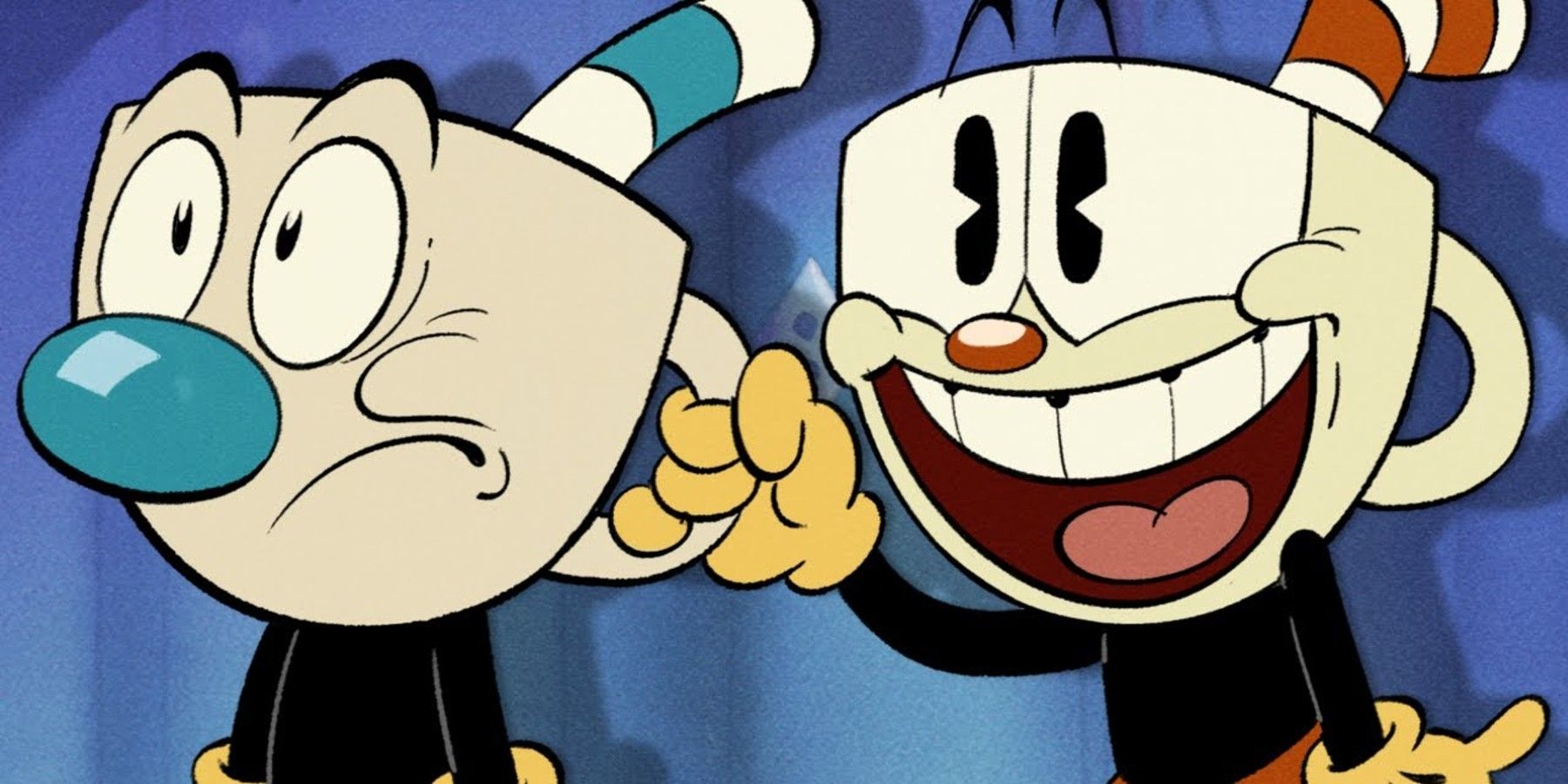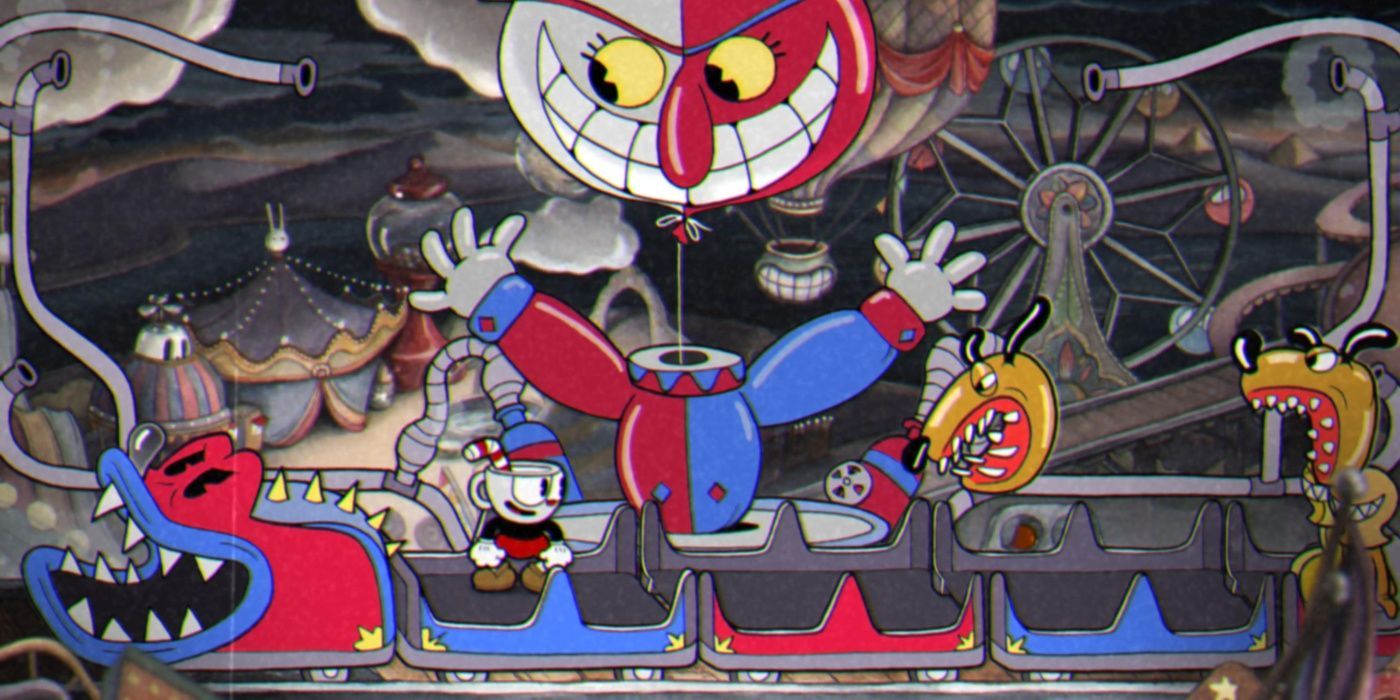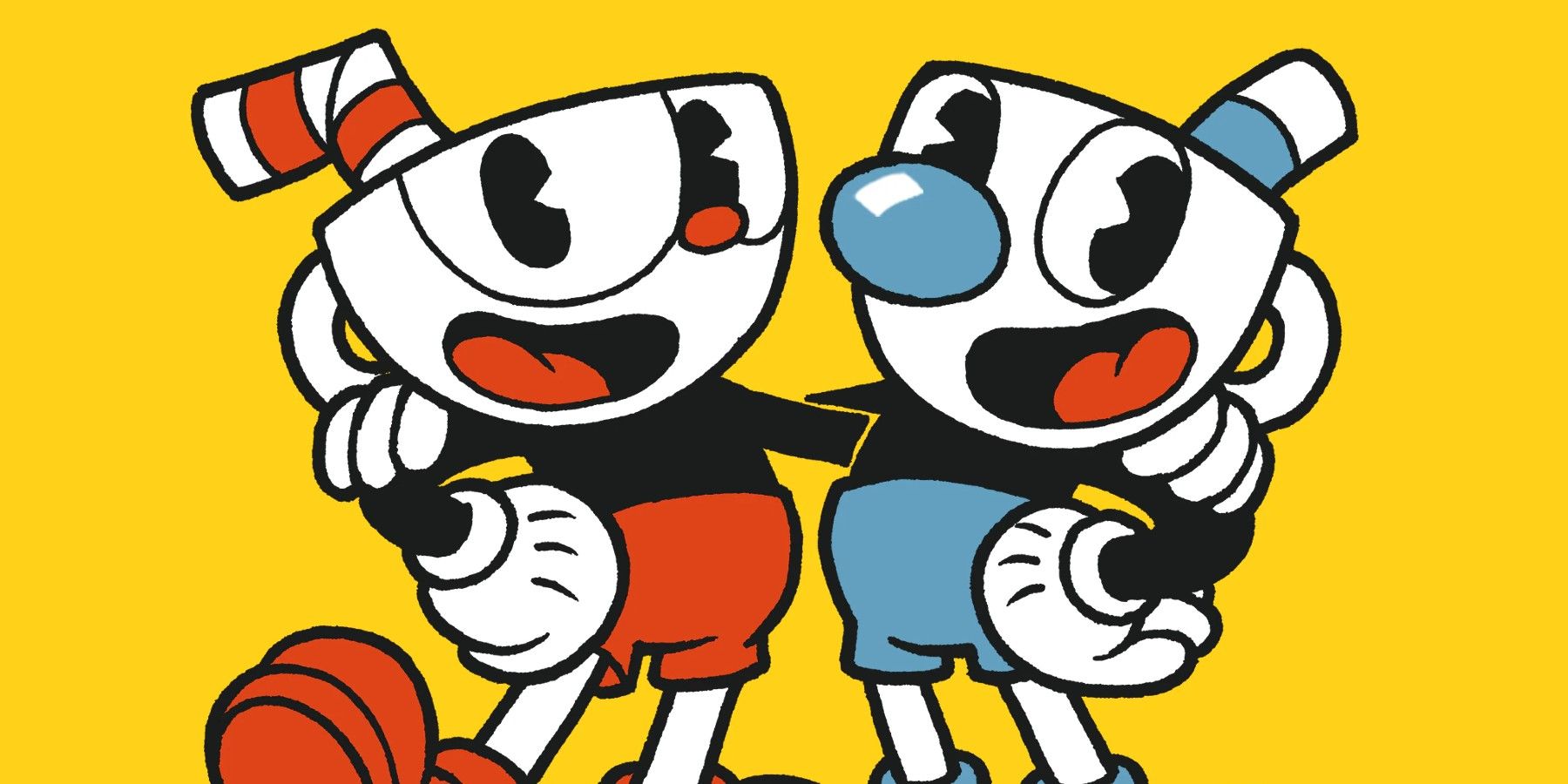Studio MDHR’s brutally difficult run-and-gun shooter, Cuphead, was one of 2017’s most popular games. Combining a “rubber hose” animation style that evoked the golden age of American cartoons with punishing gameplay and boss battles, the title has sold over six million copies and won numerous awards.
It is perhaps unsurprising that more Cuphead content is in the works, although some fans may have been shocked to learn that the franchise’s next installment will not be a video game sequel. Instead, The Cuphead Show! will be a Netflix animated series, which has a great opportunity to appeal to fans of the original game if it can strike the same disturbing and dark tone.
What Made Cuphead Such a Memorable Experience
Cuphead has proven to be a hugely popular title since its release in 2017. Although the game is renowned for its very high difficulty, Cuphead has many other positive attributes, including its boundless originality. It takes advantage of its retro art style to transport players to Inkwell Isle, a land mass populated by a weird and wonderful cast of characters, many of whom must be defeated in increasingly tough boss fights.
The game’s protagonists, Cuphead and his pal Mugman, are pitted against everything from evil cigars to anthropomorphic gingerbread castles. This allows the game to showcase its innovative art style, a deliberate throwback to classic cartoons that has rarely been seen in video games, aside from obscure titles like Bendy And The Ink Machine. However, the game didn’t rely solely upon great artwork and a highly creative roster of enemies for its success, as Cuphead was also a memorable experience because of its perfectly calibrated gameplay.
Players explored Inkwell Isle in a top-down “overworld” map before selecting which challenge they would face next. Once committed to a particular stage, the player would face either a run-and-gun platforming challenge or a fiendishly difficult boss fight, with some of these battles taking place on land while others took the form of side-scrolling aerial shoot ’em ups.
During each of these levels, Cuphead and Mugman were able to shoot a constant stream of bullets from their gloved hands while leaping around the screen to avoid attacks, also deploying parry manoeuvers against certain color-coded projectiles, or releasing devastating special attacks once they had been sufficiently charged up. A further level of strategy was derived from Cuphead’s equippable charms and special abilities, which could be purchased from an in-game store owned by a cantankerous pig named Porkrind.
Although the gameplay was highly praised, the richly developed game world and its bestiary of memorable characters certainly lends itself to an animated spin-off. As such, many fans are looking forward to The Cuphead Show! when it hits the small screen in the coming months.
What The Cuphead Show! Needs to Get Right
Originally slated for release in 2021, The Cuphead Show! has been pushed back to a 2022 Netflix debut due to the impact of the pandemic. Many fans will be happy with this delay, as it gives the show’s creators time to ensure the product is of as high a quality as possible before its release. Early signs are positive, such as the announcement of the casting of Whose Line Is It Anyway?’s Wayne Brady to voice popular villain, King Dice.
Indeed, the drive to convert Cuphead from a beloved indie game into a world-conquering franchise seems to be gathering momentum, with 2020 seeing Arby’s give away free Cuphead toys with their kids’ meals. However, this is perhaps indicative of a pitfall that the upcoming show needs to avoid, which is playing too much to a younger audience.
Cuphead’s art style is undoubtedly childlike, deliberately evoking the golden age of American animation that began in 1928 with the popularization of sound cartoons and ended in the late 1960s. Characters and settings are bright and colorful, and heroes and villains alike spend most of the game with wide-eyed and grinning expressions fixed on their faces.
However, the juxtaposition between this aesthetic and some of Cuphead’s sinister content is very deliberate. Fans often discuss how creepy old-fashioned cartoons from this period seem in comparison to modern sensibilities. With this in mind, it would be a mistake for a game whose final boss is the Devil himself to eschew this dark edge and play towards too young a viewership.
The cartoon also needs to take advantage of the game’s quirky and intelligent sense of humor. Almost as heinous as the antics of Cuphead’s rogues’ gallery is the array of eye-watering puns on display, such a level entitled “Murine Corps”, where the player battles a military-obsessed rat. Even the upcoming DLC expansion, entitled “the Delicious Last Course”, uses a clever acronym to showcase the same cheeky wordplay as the main game.
Finally, The Cuphead Show! must also ensure it retains the game’s deliberately outdated and classic art style. Modern cartoons are too numerous to mention, but there are very few which look like they’d be right at home in the 1940s, and fans will be keen to see how this aesthetic can be translated into a contemporary TV show. Time will tell whether Netflix can pull off what seems a challenging task when its latest video game crossover airs in 2022.
Cuphead is available now for PC, PS4, Switch, and Xbox One.



